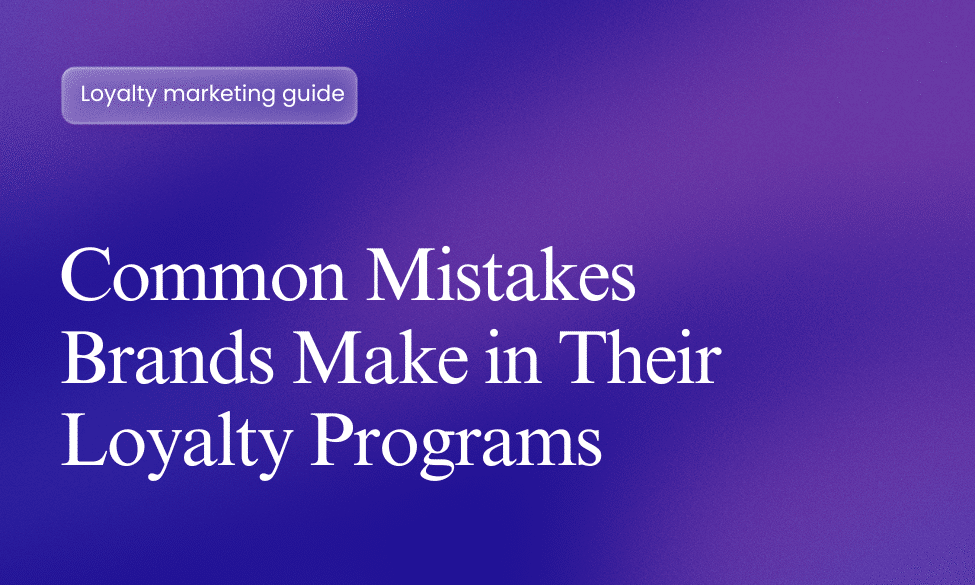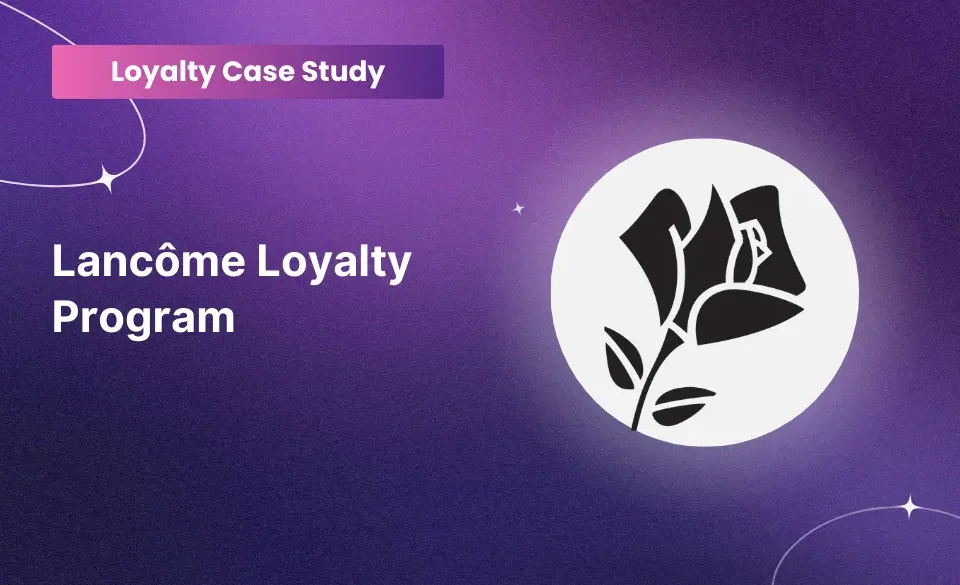Going Global: A Step-by-Step Guide for Japanese Shopify Merchants
24 October, 2025You’ve built a loyalty program hoping to boost repeat sales—but customers aren’t engaging, and results fall short. It’s a common struggle for eCommerce brands: investing time and resources into rewards programs that don’t deliver. Often, the problem isn’t the idea—it’s the execution.
From unclear rewards to poor communication, small missteps can derail even the best plans. In this blog, we’ll explore the biggest mistakes brands make in their loyalty programs and how to fix them for lasting customer loyalty.
How to know if your loyalty program is failing
Even the most thoughtfully crafted loyalty programs can stumble if you overlook some key indicators. Here’s how to tell if yours might be struggling:
- Low Customer Participation: If most of your audience isn’t signing up or actively engaging with the program, that’s a major red flag.
- Minimal Repeat Purchases: Loyalty programs should encourage repeat sales. If you’re seeing stagnant or declining purchase rates, it’s a sign of disengagement.
- High Redemption Friction: If the reward process is complicated, the rules are unclear, or the options are limited, customers will get frustrated and stop using it.
- Negative Customer Feedback: Complaints about the program, confusing emails, or a lack of perceived value suggest it’s not meeting expectations.
- Falling Engagement Metrics: If you notice a drop in email open rates, click-throughs, or mobile app interactions, it could mean customers are losing interest.
- Poor ROI: If the costs of rewards and managing the program outweigh the revenue it brings in, then it’s not a sustainable model.
Why Loyalty Programs Often Fall Short
Even the best loyalty programs can miss the mark if they don’t resonate with what customers expect or align with business objectives. Here are 9 common pitfalls that can lead to their underperformance:
- Undefined Objectives: When programs lack clear goals—like driving repeat purchases or enhancing engagement—they struggle to gauge their success.
- Irrelevant Rewards: If the rewards offered aren’t appealing or easy to redeem, customers are less likely to participate.
- Overcomplicated Structures: Confusing points systems, tiers, or redemption rules can turn customers off and discourage their involvement.
- Poor Communication: When updates are infrequent, messaging is unclear, or reminders are lacking, customers may forget about the program altogether.
- Neglecting Personalization: Treating every customer the same means missing out on chances to boost engagement with tailored rewards.
- Limited Channel Integration: Programs that aren’t seamlessly connected across websites, apps, or in-store experiences create friction and diminish loyalty.
- Ignoring Feedback: Not acting on customer suggestions or complaints can lead to dissatisfaction and disengagement.
- Weak Incentives for High-Value Customers: If your most loyal customers aren’t adequately rewarded, they might take their business elsewhere.
- Lack of Data Analysis: Without tracking engagement, redemption rates, and ROI, brands can’t effectively optimize or address failing aspects.
Solution to avoiding loyalty program challenges
When it comes to tackling loyalty program challenges, a well-thought-out approach can really boost repeat purchases and foster long-term customer loyalty. Here’s how to navigate those hurdles effectively:
- Set Clear Goals: Start by outlining specific, measurable objectives—like increasing repeat purchases, enhancing engagement, or raising the average order value—to steer your program in the right direction.
- Offer Relevant Rewards: Make sure the rewards you offer resonate with your audience. They should be achievable and align with what your customers truly want.
- Keep It Simple: Create straightforward point systems, tiers, and redemption processes that make it easy for customers to participate.
- Communicate Effectively: Stay in touch with your customers through personalized messages, reminders, and program highlights via email, app notifications, and social media.
- Leverage Personalization: Group customers based on their behavior, purchase history, and preferences to provide them with tailored offers and experiences.
- Integrate Across Channels: Ensure your program operates smoothly across your website, mobile app, and physical stores to minimize any friction.
- Monitor and Optimize: Keep an eye on engagement metrics, redemption rates, and ROI to spot any weak areas and continuously refine your strategy.
5 tips for a successful rewards program
Creating a successful rewards program can really enhance customer loyalty, encourage repeat purchases, and boost long-term revenue—if you do it right. Here are five practical tips to help you make your program shine:
- Focus on Meaningful Rewards: Provide rewards that genuinely excite your customers, like discounts, exclusive items, or early access to new products. Make sure these rewards feel within reach to keep them engaged.
- Keep It Simple and Clear: Steer clear of complicated point systems or confusing tiers. Make it easy for customers to earn and redeem rewards so they can quickly grasp how to participate.
- Personalize the Customer Experience: Break down your audience based on their buying habits, preferences, or how engaged they are. Send tailored offers, personalized emails, and relevant incentives to boost participation.
- Utilize Multi-Channel Promotion: Consistently promote your program across your website, app, email campaigns, and social media. A smooth integration allows customers to interact with your program no matter where they shop.
- Leverage Email Marketing to Drive Engagement: Use targeted emails to remind customers about your program, announce rewards, or highlight exclusive offers. Personalized email campaigns keep your audience engaged and coming back for more.
By following these tips, you’ll not only enhance customer engagement but also encourage repeat purchases and build stronger brand loyalty. A well-thought-out, user-friendly, and customer-centric rewards program can really set you apart in today’s competitive e-commerce world.
Conclusion
A well-crafted loyalty program can truly transform e-commerce brands by encouraging repeat purchases, enhancing customer engagement, and boosting lifetime value. Yet, many of these programs stumble because of vague goals, lackluster rewards, overly complicated structures, or a failure to personalize.
By pinpointing these common missteps, applying practical solutions, and creating a straightforward, customer-centric rewards system, brands can achieve better results and keep their loyal customers coming back.
Consistently tracking performance, paying attention to customer feedback, and fine-tuning strategies will help ensure your program stays effective and relevant. Ultimately, investing in a well-thought-out loyalty program not only strengthens your brand but also promotes long-term growth.
FAQs
1. How can I tell if my loyalty program is underperforming?
Look for low customer participation, minimal repeat purchases, poor reward redemption, declining engagement metrics, and low ROI. These are clear signs your program may need adjustments.
2. What are common mistakes brands make in loyalty programs?
Typical mistakes include unclear goals, irrelevant rewards, overcomplicated structures, poor communication, lack of personalization, and neglecting program analytics.
3. How can I improve customer engagement in my loyalty program?
Focus on valuable rewards, simplify program rules, personalize offers, integrate across channels, and communicate consistently with your audience.
4. Is it worth investing in a loyalty program for small e-commerce stores?
Yes, even small stores benefit from loyalty programs if designed strategically. A well-planned program can increase repeat purchases, strengthen customer relationships, and boost lifetime value.


